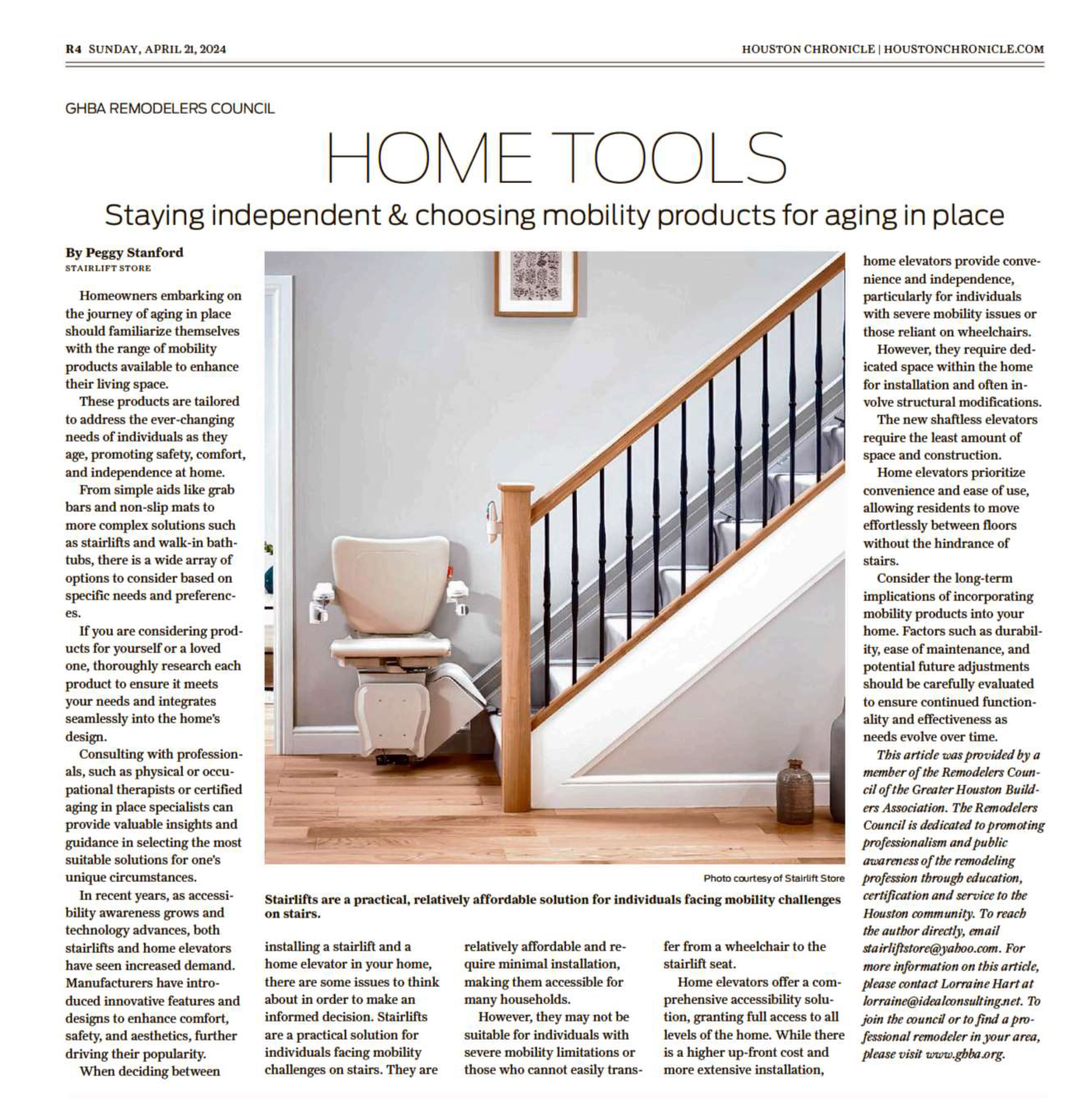Choosing Mobility Products for Aging-in-Place

This article "Staying independent and choosing mobility products for aging-in-place" was written by Peggy Stanford is about installing a home elevator. It was printed in the April 21, 2024 Sunday edition of the Houston Chronicle.
Homeowners embarking on the journey of aging in place should familiarize themselves with the range of mobility products available to enhance their living space. These products are tailored to address the ever-changing needs of individuals as they age, promoting safety, comfort, and independence at home. From simple aids like grab bars and non-slip mats to more complex solutions such as stairlifts and walk-in bathtubs, there is a wide array of options to consider based on specific needs and preferences.
If you are considering products for yourself or a loved one, thoroughly research each product to ensure it meets your needs and integrates seamlessly into the home's design. Consulting with professionals, such as physical or occupational therapists or certified aging in place specialists can provide valuable insights and guidance in selecting the most suitable solutions for one’s unique circumstances.
In recent years, as accessibility awareness grows and technology advances, both stairlifts and home elevators have seen increased demand. Manufacturers have introduced innovative features and designs to enhance comfort, safety, and aesthetics, further driving their popularity.
When deciding between installing a stairlift and a home elevator in your home, there are some issues to think about in order to make an informed decision. Stairlifts are a practical solution for individuals facing mobility challenges on stairs. They are relatively affordable and require minimal installation, making them accessible for many households. However, they may not be suitable for individuals with severe mobility limitations or those who cannot easily transfer from a wheelchair to the stairlift seat.
Home elevators offer a comprehensive accessibility solution, granting full access to all levels of the home. While there is a higher upfront cost and more extensive installation, home elevators provide unparalleled convenience and independence, particularly for individuals with severe mobility issues or those reliant on wheelchairs. However, they require dedicated space within the home for installation and often involve structural modifications. The new shaftless elevators require the least amount of space and construction. Home elevators prioritize convenience and ease of use, allowing residents to move effortlessly between floors without the hindrance of stairs.
Consider the long-term implications of incorporating mobility products into your home. Factors such as durability, ease of maintenance, and potential future adjustments should be carefully evaluated to ensure continued functionality and effectiveness as needs evolve over time.
